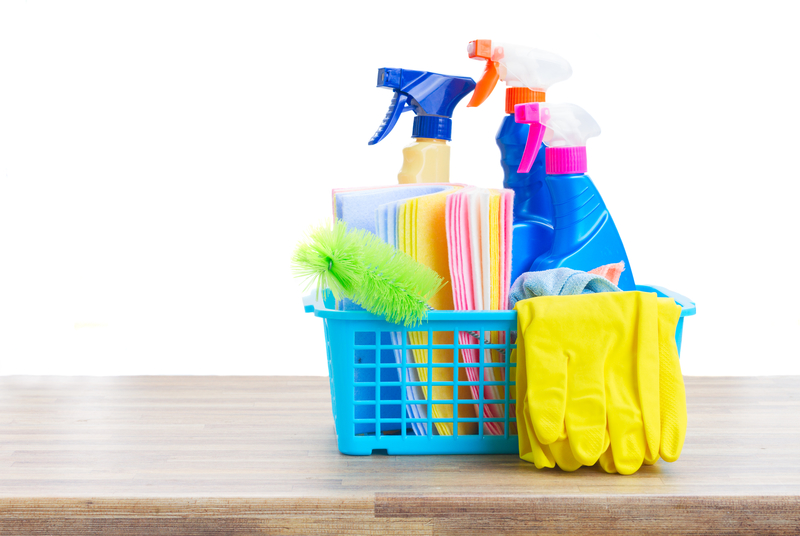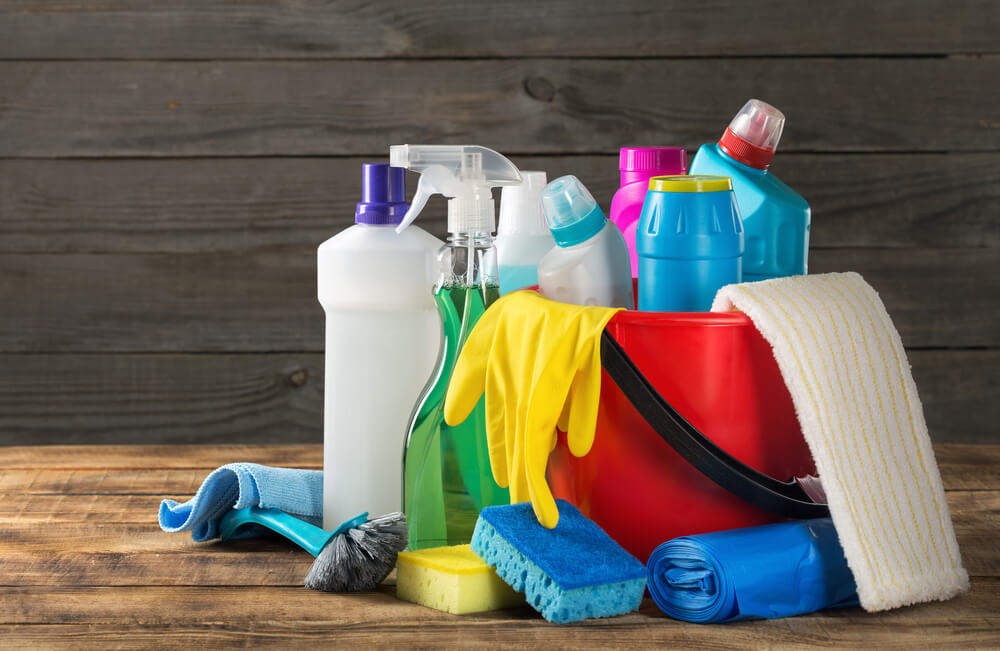Comprehending the Requirement for Thoroughly Decontaminating and Sanitizing Regularly Touched Surface Areas in High-Traffic Locations
In the realm of public health and security, the meticulous sanitation and sanitization of regularly touched surface areas in high-traffic locations stand as paramount procedures in protecting against the spread of dangerous pathogens. The importance of this technique extends far past simple sanitation, delving right into the world of disease prevention and neighborhood wellness. By checking out the numerous aspects of surface area sanitation, from the risks related to ignoring cleansing procedures to the efficient approaches that can be used, a more clear understanding arises of the essential function these techniques play in safeguarding public wellness. As we navigate this discussion, it comes to be noticeable that the effects of thorough surface area sanitation reverberate not only within the boundaries of a specific setting yet also reverberate on a broader scale, affecting the health and wellness of individuals across diverse communal settings.
Significance of Surface Area Sanitation
Emphasizing the complete sanitation of high-traffic surface areas is crucial in keeping a hygienic setting and avoiding the spread of hazardous pathogens. High-touch surfaces such as door takes care of, light switches, lift buttons, and kitchen counters offer as reproducing grounds for infections and microorganisms. Normal sanitation of these surface areas is imperative to decrease the danger of contamination and transmission of illnesses.
By implementing a durable disinfection method, institutions and organizations can create a safer environment for customers, staff members, and visitors. Appropriate surface sanitation not just minimizes the spread of contagious illness but additionally infuses confidence in the tidiness and security of the properties. This proactive technique demonstrates a dedication to health and wellness, which is especially essential in high-traffic areas where the chance of direct exposure to pathogens is increased.
In addition, surface area sanitation plays a crucial function in total infection control approaches. Incorporated with hand health methods, wearing masks, and maintaining physical distancing, extensive sanitation of high-touch surfaces forms a detailed protection versus the transmission of harmful microbes. Prioritizing surface disinfection is an important element of an all natural approach to health and wellness in common areas.
Dangers of Neglecting Cleansing Practices
Overlooking comprehensive sanitation of high-traffic surfaces considerably heightens the threat of viral and microbial contamination, posturing a significant hazard to the health and wellness of individuals frequenting these rooms. Failure to apply correct cleaning techniques can cause the buildup and spread of harmful virus, consisting of infections and germs, on often touched surfaces such as doorknobs, hand rails, lift buttons, and counter tops.

In addition, neglecting the relevance of comprehensive cleansing not just jeopardizes the health of individuals yet additionally undermines efforts to preserve a clean and sanitary setting. It is crucial to identify the value of proper disinfection procedures in protecting against the spread of infections and protecting public health and wellness.
Effective Sanitation Methods
To keep ideal cleanliness and reduce the danger of contamination on high-traffic surface areas, using effective sanitation techniques is vital. One of one of the most usual and effective sanitation approaches is making use of chemical anti-bacterials. These items can vary in toughness and make-up, with some targeting specific virus like bacteria or infections. It is vital to comply with the producer's directions for appropriate dilution, get in touch with time, and air flow when utilizing chemical anti-bacterials to guarantee their effectiveness - defrosted and cleaned every few months.
One more effective approach is making use of UV-C light. UV-C light has actually been revealed to be efficient in killing a vast variety of bacteria by interrupting their DNA framework, thus avoiding them from duplicating. It is essential to use UV-C light correctly, ensuring that the correct intensity and direct exposure time are used to accomplish the wanted disinfection outcomes.
In addition, utilizing vapor cleansing as a disinfection approach can be very reliable, specifically content on surface areas that are heat-resistant. Heavy steam can penetrate permeable surfaces and kill germs, viruses, and various other pathogens properly. When making use of steam cleansing, it is vital to guarantee that the surface reaches the required temperature level for an adequate amount of time to assure appropriate sanitation.
Effect on Public Health
The maintenance of high requirements of tidiness and sanitation on high-traffic surfaces plays an essential duty in protecting public health. Frequently touched surface areas in areas with high tramp, such as doorknobs, hand rails, elevator buttons, and restroom centers, work as breeding premises for unsafe pathogens. Falling short to effectively sanitize these surface areas can lead to the rapid spread of transmittable conditions within areas. By carrying out comprehensive disinfection methods, the danger of transmission of infections, microorganisms, and various other germs can be dramatically decreased. more
In high-traffic locations like airports, institutions, medical facilities, and public transport systems, the effect of strenuous disinfection steps can not be downplayed. Prioritizing the sanitization of frequently touched surfaces is a positive technique to advertising public health and wellness and enhancing the safety of individuals in shared spaces.
Implementing Routine Cleaning Up Methods
Without delay setting up and sticking to a consistent schedule of cleansing methods is paramount for keeping the sanitation and security of high-traffic surfaces. Routine cleansing protocols are crucial in preventing the build-up of germs and microorganisms on frequently touched surfaces, specifically in areas with high foot web traffic. By implementing an organized strategy to cleansing, organizations can efficiently lower the danger of disease transmission and develop a healthier environment for staff members, consumers, and the public.
To develop an effective cleaning schedule, it is essential to identify high-traffic areas that require frequent interest. These locations may include doorknobs, handrails, lift switches, washroom facilities, and shared devices. Carrying out a routine cleansing routine that targets these surfaces numerous times a day can considerably reduce the spread of dangerous microorganisms and viruses.
In addition, making use of suitable cleaning representatives and anti-bacterials is crucial to guaranteeing that surface areas are extensively disinfected. Learn More Here Normal training of cleaning up staff on appropriate cleaning techniques and the significance of adherence to the cleaning schedule is likewise essential in maintaining a hygienic setting. By focusing on consistent cleaning protocols, organizations can advertise the health and health of people who engage with these high-traffic surfaces.

Conclusion
In final thought, it is crucial to prioritize complete sanitation and sanitization of regularly touched surfaces in high-traffic areas to avoid the spread of hazardous pathogens and preserve public wellness. It is critical to acknowledge the relevance of maintaining clean surfaces in high-traffic areas to make certain the wellness of the community.
In the world of public health and safety, the careful sanitation and sanitization of frequently touched surface areas in high-traffic areas stand as paramount actions in avoiding the spread of dangerous virus. By checking out the numerous aspects of surface area sanitation, from the risks linked with neglecting cleansing protocols to the reliable techniques that can be used, a more clear understanding arises of the essential role these practices play in securing public health and wellness.Furthermore, employing heavy steam cleansing as a disinfection approach can be extremely reliable, specifically on surfaces that are heat-resistant. When making use of steam cleansing, it is vital to make certain that the surface area gets to the called for temperature for an enough amount of time to ensure proper disinfection.
In verdict, it is critical to focus on thorough disinfection and sanitization of frequently touched surface areas in high-traffic areas to prevent the spread of hazardous microorganisms and preserve public health.